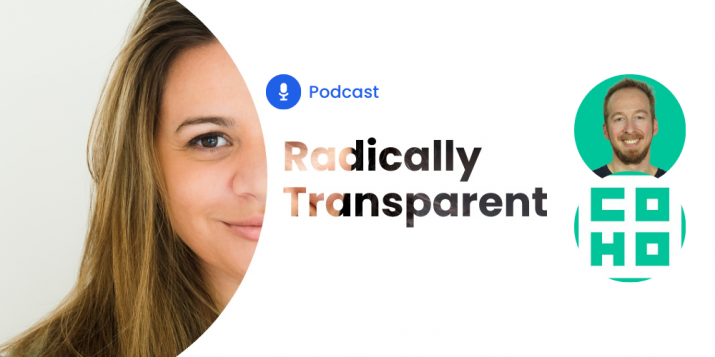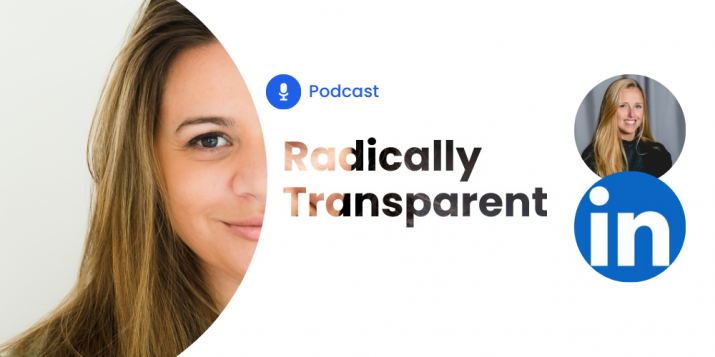
B2B lead nurturing for dummies
It amazes me how little marketing and sales experts practice “the follow-up.” Clearly, leads are supposed to push themselves down the sales funnel all on their own, right? Well, I hate to break it to you, but that (very) rarely happens. To be a great marketer or salesperson, you need to realize that leads need a little push, and it usually comes in the form of nurturing.
It turns out that 63% of people requesting information on your company won’t purchase anything for at least 3 months (20% will take more than 1 year to buy!). Do you really think prospects will remember who you are if you fail to follow up with them?
Although there will always be a few leads who are so excited by your offering that they’ll convert on their own, in most cases, they need to be put into some sort of nurturing plan. Some companies use lead scoring systems, where each sales prospect is continuously ranked based on his or her ongoing activities, such as page visits, email interactions, and social engagement, to determine which lead nurturing strategy to pursue that specific person.
By initiating and keeping up the conversation with inbound leads, sharing relevant content, and being there to answer questions and solve problems, you’re building trust and professionalism for your brand and, more importantly, maintaining “top of mind” awareness.
Let’s take a quick look at a common myth that prevents marketers and salespeople from proactively reaching out: they think the prospect will contact them. In other words, if someone is interested, they’ll reach out to you. True, this does happen once in a while, but it’s usually when the person is already knowledgeable about the product, may have already tried out the competition, and has an advanced level of familiarity with what you’re offering.
Even if your content is amazing, and you aced the demo, you still need to follow up. People are busy, stressed out, and have different priorities – making it easy for them to forget your offer as time goes by quickly. The trick is: don’t let them. Take it from the experts; according to The Annuitas Group, nurtured leads make 47% larger purchases than non-nurtured leads.
Before examining a few simple but effective nurturing strategies we’ve implemented here at Oktopost, consider your current organization’s approach. Do you have a lead nurturing strategy in place for new prospects? What approach have you implemented to ensure that prospects are in constant contact with your brand and build a strong and lasting relationship with it?
The good news is that in today’s digital world, there are countless ways to stay in touch with leads, educate them about your company, provide them with valuable content, and ultimately transform them into paying customers.
The obvious: Email nurturing campaign
When a marketer hears the phrase “lead nurturing,” the first thing that usually comes to mind is an email campaign. For those of you who are new to the industry (or haven’t kept up with the lingo), lead nurturing is most often associated with an email drip program that automates the process of moving leads down the marketing and sales funnel.
Whatever email marketing strategy you devise, don’t fall prey to the mistake of creating one general campaign for all of your leads; create different campaigns based on where they are along the sales funnel. Leads who have expressed initial interest need a general welcome and introduction to your product and industry. In contrast, others might have already reached the bottom of the funnel and are more interested in advanced content such as case studies and white papers.
More often than not, lead nurturing is achieved by using a marketing automation platform, which enables you to create email marketing campaigns to nurture leads. Here at Oktopost, we use Marketo for this purpose and have an email campaign in place for unique audiences. Based on our experience, we’ve seen that when using automated emails to nurture leads, there is an uplift of 230% in zero-touch sales; this means that 2.3x more leads are converting to Oktopost customers without exchanging in any personal communication.
For example, since Oktopost is a trial-based SaaS platform, we’ve utilized pre-trial, in-trial, and post-trial segmentation. For pre-trial and post-trial prospects who have either never signed up for a trial or already completed one and didn’t become a customer, we’ve created a series of emails that are specifically aimed at each group, respectively. The pre-trial emails are meant to encourage prospects to try Oktopost, while the post-email trials motivate those who have already done a trial to return and give the platform another chance.
Once every two weeks, this audience receives an email that includes a tip, best practice, and reference to a blog post, white paper, or webinar, which we found valuable for marketers. Nurturing leads in a non-promotional manner by sending white papers, videos, eBooks, or blog posts is a great way to boost their awareness of your product or service and show that you have their interests in mind. The pre-and post-trial contacts will also be included in email campaigns for webinars, events, and any special promotions we feel would be relevant to them.
For prospects in the trial, we launched a drip campaign for the duration of the 30-day trial, during which a user receives an email once every few days. The first email is a welcome, and the others highlight specific features we want to bring attention to until we send out a reminder that the trial is ending. One quick tip to consider is that in-trial prospects like receiving the introductory email relatively quickly—even immediately—after signing up for a trial.
The human: Personal call or email
Have you heard of the newest acronym that will hit the marketing world? It’s H2H! Human-to-Human. In spite of all the complex technology we have at our fingertips, H2H marks a return to simpler days. With all of the gobbledygook published by marketing departments, sometimes it’s hard to even understand what it is that a company actually does!
Automation is a wonderful, time-saving invention, but it has also created a sense of anonymity, turning marketing and sales into an impersonal and detached process. Today’s audiences no longer wish to communicate with a corporate identity; they realize that brands comprise people, and people are what make a brand.
I’m not saying that you should abandon your email drip campaigns, just that you should supplement them with a real, human, voice. Did someone express interest in your product, download a white paper, or fill out a contact form? Great! Use LinkedIn or just do a Google search and find out more about the person and company, and put your research to good use by sending a personal, friendly (and most importantly, human-sounding), email.
If you can spare a few minutes more, take this one step further and reach out with a phone call. According to stats published in the Lead Response Management Study, the odds of making contact with a lead increase by 100x if that person is called within 5 minutes. This offers a much more personal touch, giving the prospect a chance to ask specific questions and talk to a real person. Giving someone that extra bit of attention can often go a long way in the sales cycle.
If you’ve decided to go down the personal route – there are a few keys we can teach you from our experience at Oktopost. First of all, it really helps to use a CRM such as Salesforce.com to keep track of your calls and emails. Whenever we make a call, we always check the email and call documentation listed first and also examine the prospect’s usage of the platform.
Make sure to update your CRM with the details of each correspondence, so that can easily look at past emails and stay up to date. Also, chances are that these efforts will be used to supplement whatever automated processes you already have set up, so make sure to take a look at what emails are going out that day before unnecessarily inundating someone with a call or additional email.
This goes without saying, but you should always put into place a schedule for contacting a prospect, preferably one that doesn’t feel too intrusive or pushy. For example, The Marketing Donut is a strong advocate of the five “nos” follow-up strategy, where you maintain contact with prospects until each one of them has said “no”, or “not now”, or “not yet” at least five times. When it comes to following up, apart from determining a set number of times, always exercise your best judgment to determine whether it’s time to put down the phone and move on to the next prospect.
Recommended for further reading
The social: Connect on Twitter or LinkedIn
Who would have thought, just a few years ago, that social media would be part of a lead nurturing strategy for B2B? It’s really important to reflect on how far we’ve come regarding B2B social media marketing. Not even a decade ago, marketers would have scoffed at the idea that social media would be used to reach out to and nurture a relationship with a lead.
We at Oktopost have decided to designate this month to be Oktober – the month to celebrate B2B social media marketing, and the amazing benefits it has brought us. As you read this section of the post, take a moment to appreciate the positive effects social media has had on every aspect of your life – including B2B marketing.
As previously, email is the first strategy that comes to mind when marketers think about nurturing – but this is far from reality. There are many more ways to follow up and reach out to leads outside of the inbox, and social media channels are just one example of this.
Next time a new lead comes into the system, try connecting with that person on LinkedIn or Twitter. It’s probably best to bypass networks such as Facebook and Instagram in favor of the two former ones, where it’s much more acceptable to reach out to people for business-related purposes.
For example, did someone just sign up for a trial of your service? Awesome! Tweet them a welcome, ask them how the trial is going so far, or just make a personal introduction. Once they respond, the most important thing to do is keep the conversation going. Don’t just say hello and then disappear. Always monitor Twitter for mentions or responses to your tweets, and, of course, mentions of your brand, technical support requests, and feedback, and verify that no lead is left behind.
If you prefer to connect on LinkedIn instead, go for it. Just remember that a personal invite will go much farther than the generic “Please add me to your LinkedIn contacts” message will. Make a strong first impression by using the person’s first name, mentioning how you reached them, and providing a short introduction.
As with Twitter, it’s crucial not to “connect and forget.” Most people never give another thought to LinkedIn contacts, and if you’re one of them – it’s best for you to choose a different nurturing route. Again, the key purpose is to a keep an on-going dialogue about their company and professional needs.
This can also serve as a great avenue for exchanging helpful content, providing best practices, or even recommending a great LinkedIn Group to join. What it comes down to is creating a strong bond that will push the prospect in the right direction.
The real-time: Chat on instant messaging services
Chatting with prospects on instant messaging services is probably the least “traditional” nurturing route, but apart from phone calls, it probably comes closest to personalizing the user experience. Connecting with a prospect on an instant messaging service (Skype is our preferred choice) is great for a number of reasons.
First off, this approach makes your brand more “accessible” than any other nurturing channel. In other words, prospects feel like they can reach out to you – a human – at any time, with questions, feedback or just to say hello.
Secondly, it provides you, the marketer, with a direct channel of contact to prospects, which lets you check in on them, ask for immediate feedback on your product or service, and convey that you have their interests in mind.
Despite the extremely personalized nature of this channel, we have found that it can often become a burden, not to mention very (very!) time-consuming.
When it comes to instant messaging, people expect you to answer immediately, and this can easily disrupt your workflow throughout the day. This type of nurturing is best handled by customer support or customer success manager who is exceptionally familiar with the product or service and has lots of patience.
An additional downside we’ve encountered with this method is that instant messaging conversations can potentially harm other technical or support processes you have in place, especially since there is no documentation involved. For example, instead of opening a support ticket that’s sent to the tech team, prospects prefer to contact you directly on Skype, which can damage the entire flow of the support process.
The persistent: Retargeting campaigns
Going back to the importance of “top of mind” preference, launching a retargeting campaign is a great way to achieve this. Solutions such as AdRoll work by tracking people who previously visited your website and then displaying your ads to them as they visit other sites online. Retargeting puts your company front and center by “following” your prospects and repeatedly exposing them to your brand, making it nearly impossible to forget.
Since we started using AdRoll, we’ve found that the time it takes a non-trial lead to become a customer has decreased by over 125%. Like email nurturing, retargeting campaigns work best when you segment your leads and customize each advertisement according to that group’s specific needs. As with any other marketing collateral, your ads need to have a simple, clear, and visible call-to-action that attracts attention.
Although this method is not considered “classic nurturing,” it’s an excellent strategy for ensuring that leads stay aware of your brand. You can even choose to redirect them to the last page they visited on your website, or specific landing pages that you think would be of interest to them. Most retargeting platforms have the ability to retarget leads on mobile and desktop devices, with ads appearing on publications, blogs, and even social networks such as Facebook and Twitter.
Don’t forget – Your customers were once leads, too
With all of this talk about nurturing leads, it’s easy to forget that existing customers still need their own nurturing. Whether you recognize their loyalty by offering them a special promotion, conducting an annual feedback survey, or just sending them a weekly email tip, don’t leave them in the dust. After all, they’re the ones who make your business’s existence possible in the first place.
Put a system in place for following up with a new customer immediately after a sale is completed. If it’s a smaller deal, a personal email should suffice, but if it’s a more significant one, make the effort to pick up the phone, or if you’re feeling particularly grateful, send a handwritten note. Whichever method you choose, remember that nurturing your existing customers and keeping them happy should always remain a top priority.


